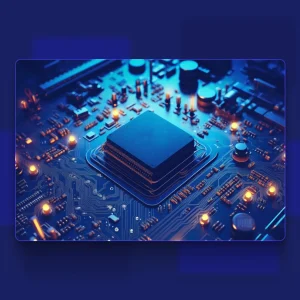Robotic Process Automation is a process to replace the human effort by bots to do repetitive and mundane tasks. The advantages of this are increased efficiency, accuracy, and higher ROI. It also frees the human resources to be used for better and more productive jobs.
Robotic Process Automation consists of 3 major components:
-
Robotic – An entity that is capable of being programmed by a computer for doing complex tasks is known as a Robot. In terms of RPA, this task would be to mimic human actions. We are talking about software robots, not mechanical.
-
Process – A process is a sequence of actions/activities or steps/tasks taken in order to achieve a particular end.
-
Automation – When a task/an activity happens automatically, i.e. without human intervention.
Based on these terms, we can assume that Robotic Process Automation means:
Mimicking human behavior to execute a sequence of steps/actions which leads to a meaningful end without human intervention.
According to McKinsey Research,
Knowledge in work automation could have an economic impact of $5-7 trillion by the year 2025. It will touch more than 230 million knowledge workers, nine percent of the global workforce
It is estimated that up to 45 percent of the activities companies pay people to perform can be automated through RPA.
-
Routine tasks in the ‘Do’ category contribute to over 90% of the regular and repetitive work.
-
RPA is best suited for automation of routine and repetitive tasks.
-
It is best suited for Banking, Financial Services, HR operations, Supply Chain, and similar functions. They may require some cognitive work also.
-
RPA technology is not amateur as many think as some organizations feel skeptical in implementing RPA in their processes.
-
RPA is there in the market from the past 10 years and is mature. Bots have been into the processes from the last 6-7 years in applications having location-based services.
The reason why I’m telling you that UiPath is the top tool, you should look at the following pointers:
-
UiPath is the top tool to learn RPA and it does not require any knowledge of programming languages to use it to implement RPA.
-
UiPath is among the leading tools in the past 4 years in terms of popularity and usability.
-
The tool is simple to use and has a drag and drop functionality of activities (an activity is an entity that performs a specific action in an RPA solution), using which you can easily set the functionality of your Process Automation Solution.
-
UiPath has a standard Studio version which has a trial period of 60 days.
-
And the best part is, UiPath comes with a Community Edition which is free for lifetime and has most of the functionality of the Studio version.
During this course, we’ll use the latest version of UiPath Studio 2020 (beta). This version includes UiPath Assistant. UiPath Assistant is the center of all your attended automation needs. It is an application that allows you to view, manage, and set reminders for processes.
If you have any questions, please don’t hesitate to contact me.
Sign up today and see how fast you can improve your seniority and create your first robot!
–










There are no reviews yet.